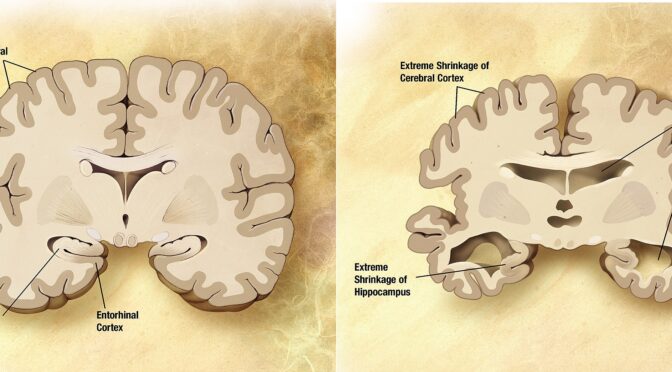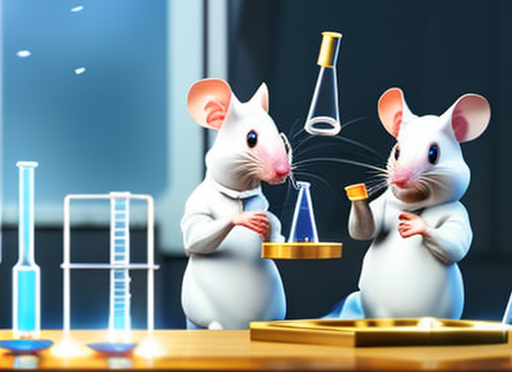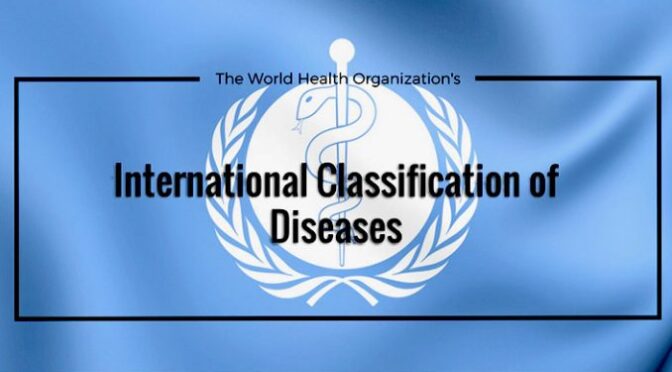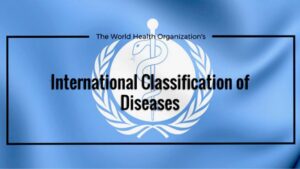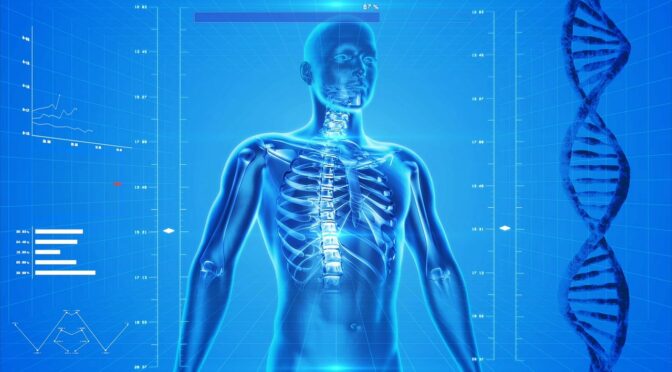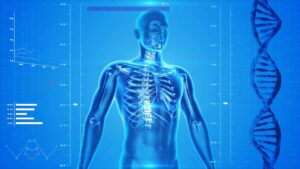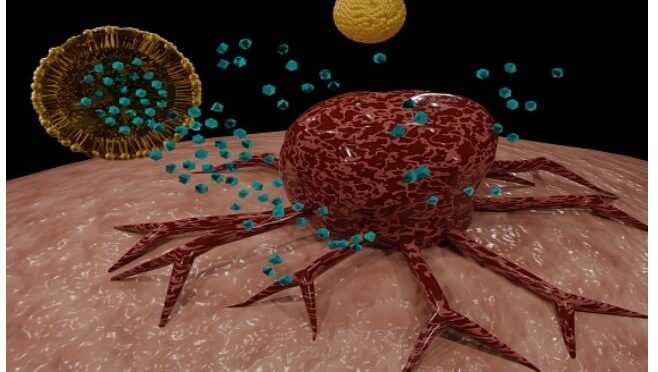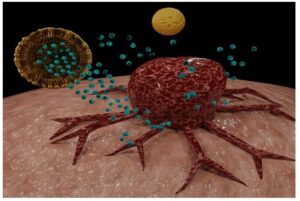It’s likely that we’re just another 6 years away from the point that the general public will hit longevity escape velocity.
Peter H. Diamandis, tweet, March 14 2023
This month’s theme: Organizations for Healthy Longevity
Introduction
From small startups and NGOs to enormous private and public organizations, the field of longevity institutions is large and changing constantly.
In this newsletter, we will give you a list of the main groups divided into categories. Many of them are active in more than one category, and the choice of the category is often subjective. For each organization, you will find a few words of explanation, often with the name of the most well-known representative(s). Should, in your opinion, an important organization be missing, let us know, Heales will probably have a longer list update.
Very big organizations
These are the biggest organizations in the field in terms of investments announced. We speak here about billions of dollars. The organization that only financing activities are mentioned in the category « funding organizations »
- Google Calico. Focusing on both basic research and the translation of our discoveries into new interventions that can help people live healthier, and maybe longer, lives.
- Chan Zuckerberg Initiative (not « officially » longevity). It was founded in 2015 to help solve some of society’s toughest challenges — from eradicating disease and improving education to addressing the needs of our local communities.
- Altos Labs. Restore cell health and resilience through cellular rejuvenation programming to reverse disease, injury, and disabilities that can occur throughout life.
Clinical Trials
These organizations are really testing therapies on humans or on animals or planning to do so very soon
- BioViva Science (Liz Parrish). BioViva is committed to lengthening healthy human lifespans with AAV and CMV gene therapy (works with Integrated Health Systems.
- Longevity Escape Velocity Foundation. Exists to proactively identify and address the most challenging obstacles on the path to the widespread availability of genuinely effective treatments to prevent and reverse human age-related disease.
- Rejuvenate Bio (George Church). Will make dogs (and later humans) “younger » by adding new DNA instructions to their bodies.
- Dog Aging Project The goal of the Dog Aging Project is to understand how genes, lifestyle, and environment influence aging. We want to use that information to help people increase their healthspan, the period of life spent free from disease.
- Loyal for Dogs (Celine Halioua). Loyal is a clinical-stage veterinary medicine company developing drugs intended to extend the health span and lifespan of.
Public organizations
Sadly, not one public organization in the world has the explicit goal of extending the maximal healthy lifespan of humans. But a few public organizations work actively on aging.
- European Health Data Space (EHDS). Support individuals to take control of their health data, support the use of health data for better healthcare delivery, better research, innovation, and policy making, and enables the EU to make full use of the potential offered by a safe and secure exchange, use and reuse of health data
- National Institute of Aging (USA). Lead a broad scientific effort to understand the nature of aging and to extend healthy, active years of life. The Interventions Testing Program (ITP) is a peer-reviewed program designed to identify agents that extend the lifespan and health span in mice.
- Institut Pasteur de Lille, Founded in 2003 by Prof Miroslav Radman and Prof Marija Alačević, is a research center, which mobilizes 34 research teams and aims to decipher the essential physiopathological mechanisms of the most impacting diseases, particularly infectious ones, to understand these diseases, slow down their development and imagine the treatments of tomorrow.
Start-ups
Many start-ups as an explicit goal to extend the healthy life expectancy of humans. In this list, we mention only those who progressed already or seem to be able to progress in the relatively near future. Of course, these are for profit-organizations, which means they often sell products, have non-disclosure agreements, and want to create profitable synergies with others.
- Retro Biosciences. The mission is to add 10 years to a healthy human lifespan We’re starting with cellular reprogramming, autophagy & plasma-inspired therapeutics.
- Apollo Ventures (Alexandra Bause and James Peyer). Apollo Health Ventures develops interventions with the potential to prevent or reverse age-related diseases and extend a healthy human lifespan.
- NewLimit (Brian Armstrong and Blake Byers). Biotechnology company working to radically extend the human health span through epigenetic reprogramming.
- Oisin Biotechnologies. A startup aiming to rid bodies of senescent cells using gene therapy (founded by the SENS Foundation).
- Rejuve (Ben Goertzel). The AI Longevity Network builds a decentralized network of researchers, clinics, and data contributors working together to arrive at breakthrough discoveries in the fight against aging while making the resulting solutions affordable and accessible for all
- Deep Longevity (Alexander Zhavoronkov, see also In Silico). Developing explainable artificial intelligence systems to track the rate of aging at the molecular, cellular, tissue, organ, system, physiological, and psychological levels.
- In Silico Medicine (financed by Deep Knowledge Ventures). The mission is to extend healthy productive longevity by transforming drug discovery and development with artificial intelligence software, significantly reducing the time and cost to bring life-saving medications to patients (Deep Knowledge Life Sciences, Deep Knowledge Analytics – DKA Biogerontology Research Foundation (BRF), Aging Analytics Agency) (See also Longevity International, Longevity book (Dmitry Kaminskiy), Longevity A.I. Consortium.
Institutes and Research Centers
These organizations work on the study of aging
- Salk Institute (Juan Carlos Izpisua Belmonte). The Institute is an independent nonprofit organization and architectural landmark: small by choice, intimate by nature, and fearless in the face of any challenge. Be it cancer or Alzheimer’s, aging, or diabetes.
- Buck Institute for Research on Aging, Mission is to end the threat of age-related disease for this and future generations.
- Glenn Consortium for Research in Aging (11 centers). To extend the healthy years of life through research on mechanisms of biology that govern normal human aging and its related physiological decline, to translate research into interventions.
- Life Biosciences (David Sinclair and Nir Barzilai). Research and development on therapeutics for human health. (See also Elixir Pharmaceuticals and Sirtris Pharmaceutical)
Aging can be redefined. We’re leading the way. Life Biosciences is developing innovative therapies to transform how we treat diseases by targeting aging biology.
- Young Blood Institute (Mark Urdahl). Studies of new medical uses for well-established blood plasma replacement immunotherapies have recently indicated the previously undocumented potential to restore senescent immune systems and prevent many age-related diseases.
- Mediterranean Institute for Life Sciences (Miroslav Radman). Independently funded, international, non-profit research institute. Led by enthusiastic professionals, we strive to create and sustain a top-quality research environment for both international and local exceptional scientists.
- Geron (Michael West). Research, experiment, adapt, and even defied conventions in pursuit of new possibilities for patients. Driven by the big idea behind telomerase inhibition – that you can kill cancer cells by targeting the enzyme that drives their uncontrolled growth.
- Bakar Aging Research Institute (BARI). A scientific community that aims to translate breakthroughs in aging research.
- Elveflow (Guilhem Velve Casquillas). Believe that microfluidics is the backbone of the ongoing biotech revolution. Aim at making it accessible to every scientific or engineering team. See also Elvesys.
- Lyceum (Michael Rose). The laboratories at UC Irvine’s Department of Ecology and Evolutionary Biology are building new biology based on genomics, experimental evolution, and statistical learning. These are powerful tools for rebuilding biology, especially when used together.
- Medical futurist. Medical Futurist Institute, the very first research institute specializing in digital health.
- Lifespan Research Institute. Extend lifespan by discovering anti-aging compounds
- Centre for Healthy Ageing (Andrea Maier, Brian Kennedy). The major focus of the Centre is to delay aging, prolong disease-free life as well as maintain high functionality and resilience.
- The Conboy Laboratory (Irina and Michael Conboy). Engineering Longevity. Company rejuvenating plasmapheresis (blood plasma dilution).
- Rejuvenate Biomed Research the biology of aging and identify opportunities to impact the aging process. Develop medicines that can positively influence molecular mechanisms that lead to age-related and degenerative diseases, also known as the hallmarks of aging.
NGOs
Many non for profit organizations as for the explicit goal of extending the healthy life expectancy of humans. In this list, we mention only those who progressed already or seem to be able to progress in the relatively near future. NGOs working mostly on advocacy are mentioned further in this document.
-
- LessDeath (Mark Hamalainen). Nonprofit with the mission to support the growth and effectiveness of the longevity industry’s workforce. Help aspiring longevity engineers start or advance their careers by providing education, career guidance, mentorship, experience, networking, and employment opportunities. Longevity Biotech Fellowship is a non-profit community for people to come together to build, join, or invest in revolutionary longevity biotechnology projects.
- Longevity Research Institute (Joe Betts-Lacroix, Sarah Constantin, Jaan Tallinn). A health-span-expanding treatment for humans would prevent years of severe illness for billions of people. Plan to design, fund, and launch animal lifespan studies for the most promising longevity interventions.
- BGRF (Biogerontology Research Foundation). Constituted as a charity in the UK to support the application of our knowledge of the mechanisms of aging to the relief of disability, suffering, and disease in old age
- DataBETA Test-based DNA methylation for people testing anti-aging therapies.
- Better Humans. World’s first specifically-transhumanist bio-medical research organization.
- Wellcome : Good health makes life better. Want to improve health for everyone by helping great ideas to thrive.
- Church of Perpetual Life Mission is to assist all people in the radical extension of healthy human life and to provide fellowship for longevity enthusiasts through regular, holiday, and memorial services.
Advocacy and Information
Of course, most organizations inform and promote their own longevity goals and activities. Some groups are especially dedicated to informing scientists, stakeholders, and citizens.
- Fight Aging (Reason). The source of information for longevity. The outgrowth of a similar initiative called the Longevity Meme that ran as a news service and online resource from 2001 to 2011. Fight Aging! continues in its stead.
- Open longevity Community of rationally-minded people. We prefer life over death, especially young and healthy life. Against aging and support using a scientific approach to fight it.
- Heales (Sven Bulterijs, Didier Coeurnelle). Inform and raise awareness about technological and medical developments in the field of biogerontology. Promote and support anti-aging research. Open up debates, question decision-makers, and propose a reassuring ethical framework.
- Lifespan.io. Advocates for the development of medical technologies to rejuvenate aged tissues and organs. By directly targeting the aging processes, many age-related diseases might be prevented, delayed, or treated at once. By sponsoring, democratizing, and funding aging research, combined with responsible journalism, aim to accelerate progress toward this important goal for all humankind.
- Longevity Technology. Well-developed website of information and the latest news in the field of longevity.
- Alliance for Longevity Initiatives (Dylan Livingston) (USA). Aims to bring together politicians from across the aisle to promote policy changes.
- International Longevity Alliance (Daria Khaltourina). Help create a world where every person will be able to achieve aging amelioration and healthy longevity through innovative medical technologies. Promote the advancement of healthy longevity for all people through scientific research of ageing biology, and the development of new drugs and therapies.
- Life Extension. Finding new ways to empower you to live a healthier, richer life— from innovative formulas to finding responsibly sustainable partners to supply our ingredients.
- CureDAO. Community-Owned Platform for the Precision Health of the Future
- Longecity. The main hub is a forum that invites discussions of diverse topics: science, nutrition, lifestyle, and philosophy. Its features include messaging, subscriptions, ratings, keyword tags, and annotations.
- The immortalist (Dinorah Delfin) Publishing high-quality news articles, academic essays, & interviews featuring the movers & shakers of the Immortalists Revolution.
- Longevity History (Ilia Stambler). History of fighting aging.
- Longevity wiki. Offer the latest scientific findings on longevity. Be an accessible, objective, and unbiased source of information.
- IDL International database on longevity. Collates information on deaths at age 105+ from countries with the reliable civil registry or equivalent systems.
- Gerontology Research Group. A list of all the supercentenarians in the world.
Biohacking
A few people are experimenting on themselves with longevity therapies and communicating the results
- Rejuvenation Olympics (Bryan Johnson, Oliver Zolman). Public forum to share protocols and validated results for age rejuvenation. See also the Blueprint Project.
- Conquer Aging Or Die Trying! (Michael Lustgarten). Videos that are related to optimal health, fitness, aging, lifespan, and, Ph.D. data-driven attempts to biohack all of it.
Funding and Prizes
Longevity research is expensive. To accelerate it, the most current way is funding. But the promotion is also organized by a « friendly » competition, by organizing prizes for longevity research.
- Hevolution Foundation. Every human has the right to live a longer, healthier life. The organization announced one year ago that it was going to finance projects with one billion dollars a year.
- VitaDAO. Decentralized collective funding for early-stage longevity research.
- Kizoo (Michael Greve). Provide mentoring, seed, and follow-on financing with a focus on rejuvenation biotech.
- Life Extension Advocacy Foundation (LEAF) (Steve Hill). Promote the advancement of biomedical technologies which will increase a healthy human lifespan. By sponsoring and democratizing research efforts through crowdfunding and engaging the public. See also the Longevity Investor Network,
- Longevity Xprize Community (Sergey Young). Study the future of longevity to discover innovative and accessible ways to radically extend everyone’s healthy lifespan. See also moralityofimmortality.com: moral aspects of reversing aging
- Longevity Vision Fund (Sergey Young). Venture capital fund that invests in technologies with the potential to disrupt life sciences and healthcare to help people live longer and healthier lives. The fund’s mission is to accelerate longevity breakthroughs and to make them more accessible and affordable to everyone.
- Juvenescence (Jim Mellon). A team of scientists, and pharmaceutical and nutritional product developers have a window into the world of disrupting the aging market that no one could ever have imagined. Using cutting-edge technologies and leveraging the latest advances allow us to make bold scientific discoveries.
- Palo Alto Longevity Prize (Joon Yun). A life science competition dedicated to ending aging. It is one of a growing number of initiatives around the world pursuing this goal
- Longevity Prize: a collaboration between VitaDAO, Foresight Institute, and the Methuselah Foundation. Aim to generate an avalanche of proposals, experiments, and collaborations on undervalued areas
Cryonics
If longevity research is not going fast enough, there is maybe a plan B
- TomorrowBiostasis (Switzerland – Germany). Founded by doctors, engineers, and entrepreneurs to further science and provide high-quality cryopreservation.
- Cryonics Institute (USA) is an American nonprofit foundation that provides cryonics services. CI freezes deceased humans and pets in liquid nitrogen with the hope of restoring them with technology in the future.
- Alcor (USA) is the world leader in cryonics, cryonics research, and cryonics technology. Alcor is a non-profit organization located in Scottsdale, Arizona, founded in 1972, to help bring cryonics to the world.
- Kriorus (Russia) was established as a Russian Transhumanism Movement project by 8 founders.
Products and Therapeutics
These organizations affirm that they have products that are already making longer and healthier lives possible.
- DoNotAge. Longevity partner. Provide quality health products.
- Elysium Health: Translate critical scientific advancements in aging research into accessible health products and technologies.
- One Skin.(Carolina Reis Oliveira). Pioneering technologies aimed at extending human health span.
- Novoslab (Kris Verburgh) Novo leverages science and data to create the best nutraceuticals to extend the human lifespan.
- Ageless Partners worldwide health services company that helps clients to decipher the key mechanisms and root causes of aging through various product offerings
- Cambrian (James Peyer). Biopharma developing new therapies to extend healthy lifespans, bringing proven expertise to teams worldwide.
- AgeX Therapeutics, Development of novel therapeutics targeting some of the largest market opportunities associated with an aging population.
- Age Reversal Network.Human Age Reversal Project.
- BioAge Labs (Kristen Fortney). Mapping human aging to develop a pipeline of therapies that treat disease and extend a healthy lifespan.
- Longeveron Biological solutions for aging-associated diseases through the testing of allogeneic human Mesenchymal Stem Cells (MSCs)
- Human Longevity Incorporated (Craig Venter, Peter Diamandis) helps to live a healthier, longer life. They designed a leading-edge precision healthcare program using today’s best technology to detect and help preempt cancer, cardiac, metabolic, and neurodegenerative disease, and more.
- Celularity. Lead the next evolution in cellular medicine by delivering off-the-shelf allogeneic cellular therapies.
- Leucadia Therapeutics. Fight against Alzheimer’s disease.
- resTORbio Clinical-stage biopharmaceutical company novel therapeutics for the treatment of aging-related diseases.(rapamycin).
Organizations mainly in another language than Eglish
Most organizations work mostly for the biggest part in English. Here are a few exceptions
- Open longevity (in both Russian and English) working on all projects related to longevity and extending lifespan. Open to collaborations and sharing data publicly.
- Longlonglife (in both French and English) working in close cooperation with the greatest research laboratories on themes that will push forward the research on aging.
- AMIIF/ (in Spanish) The Mexican Association of Pharmaceutical Research Industries, Represents more than forty Mexican companies -with national and international capital with a local and global presence- leaders in developing pharmaceutical research and biotechnology.
- Partei für schulmedizinische Verjüngungsforschung (in German) (Felix Werth). Single-issue party. With future medicine, through rejuvenation, people are likely to stop dying of old age diseases. To achieve this, much more government money should be invested in building and operating additional research facilities and in training more people.
And to go further, other lists:
Below, you will find some other lists of organizations.
- Probably the best list of non-profit organizations and companies on the website of Aging Biotech Info
- On this page, you will find a list longer than in this newsletter, but still not complete (managed by Heales).
- Longevity book, Aging Analytics Agency (Dmitry Kaminskiy). Use knowledge of anti-aging technologies and current research paradigms to create invaluable databases and provide a supporting framework for financial decision-making.
- H Plus Pedia. Another list of longevist organizations that you may complete/correct.
- Sub Reddits Map of all anti-aging organizations. Reddit thread with all the Anti Aging .
Conclusion
Compared to 10 years ago, the field of longevity organizations is much larger and bigger. Competition, diversification, and emulation can be good for the progress of research.
However, it is important to favor transparency for a real sharing of knowledge. This newsletter is a small contribution to this necessity for the common good of healthy longevity.
Bad News of the Month: Life expectancy in the European Union falls for the second year in a row.
Good News of the Month: Sam Altman (from Open.AI invested $180 million into a company trying to delay death.
Life expectancy in the European Union further decreases, following a larger drop from 2019 to 2020. Compared with 2020, life expectancy for both women and men decreased by 0.3 years. Life expectancy is in 2021 82.9 years and 77,2 years for men. At the country level, the highest life expectancy at birth was recorded in Spain (83.3 years), Sweden (83.1 years), Luxembourg, and Italy (both 82.7 years), while the lowest was in Bulgaria (71.4 years), Romania (72.8 years) and Latvia (73.1 years).
The startup called Retro Biosciences eased out of stealth mode in mid-2022, it announced it had secured $180 million to bankroll an audacious mission: to add 10 years to the average human life span. MIT Technology Review reveals that the entire sum was put up by Sam Altman, the 37-year-old startup guru and investor who is CEO of OpenAI. Altman spends nearly all his time at OpenAI, an artificial intelligence company whose chatbots and electronic art programs have been convulsing the tech sphere with their human-like capabilities.
For more information
- Heales, SENS, Longevity Alliance, Longecity, and Lifespan.io
- Heales Monthly Science News
- Source of the image: infinity sign in a big house in the sun, generated by https://www.craiyon.com/

